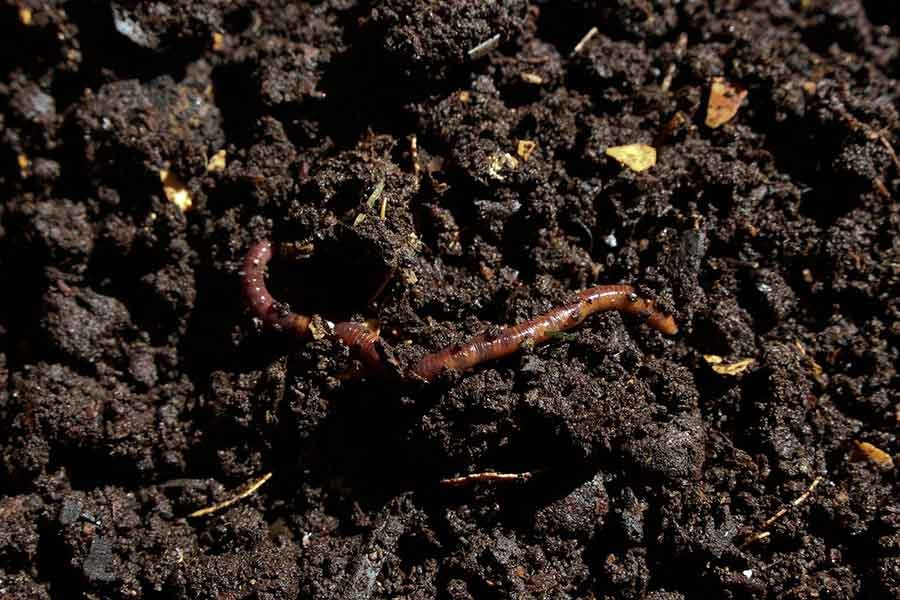Make a Difference— Composting for a Healthier Island
by Don Krafft and Ron Rundus, Island County Master Gardeners
Can you imagine a substance that is beneficial to nature, helps reduce climate change and is abundant and free? That substance is compost, a material that is produced by taking organic waste and turning it into rich plant food. In fact, it’s one of the best things you can use to provide vital nutrients to your garden.
Compost is different from fertilizer. Fertilizer feeds plants directly, while compost feeds the soil, enriching it so that plants continually have the nutrition they need. Poor soil lacks the organic matter that plants need for nutrition. In undisturbed nature, decomposing plant and ani-mal matter provide those nutrients. Composting is our way of stepping in on behalf of nature and supplying those necessary ingredients.
There are many benefits to com-posting. Besides keeping beneficial organic materials out of landfills, compost improves garden soil, sup-plies critical nutrients to plants, helps retain moisture and suppresses pests and plant disease. It provides climate protection by reducing methane output in landfills, storing carbon, and improving the plant growth that aids in carbon sequestration.
The EPA estimates that more food goes to landfills and incinerators than any other material, comprising 24% of all landfill. Washington State estimated in 2016 that 20.6% of our waste was food and 5.4% was yard debris. Island County has not done a comprehensive study, but we can assume that our numbers are near the state or national percentages. Island County considers backyard composting a key activity critical to reducing food waste.
Composting is simply mimicking nature’s way of recycling plant and animal residues and nutrients. There are many composting methods for you to choose from, depending on the amount of time and energy you want to spend.
The dominant elements in organic materials that affect composting are carbon and nitrogen. Carbon is dominant in drier, woodier materials, such as dry leaves and wood chips, while nitrogen is dominant in wetter, fresher materials. We refer to the carbonous material as “browns” because they are often brown or dark in color, and to the nitrogenous materials as “greens” as they often are green in color. The ideal carbon to nitro-gen ratio for composting is about 30:1 carbon to nitrogen. Fortunately for the home composter, we can approximate this ratio by combining an equal quantity of browns and greens by volume.
Once we have a suitable mix of browns and greens, we need to provide the conditions for microbes to thrive, then consume and transform the material. Specifically, the microbes need oxygen, moisture and some time to work their magic to produce the dark garden gold called humus, which is nature’s stable, nutrient-rich amendment that we can add to our landscaping and vegetable gardens.
Examples of common green materials are manures from herbivores or omnivores (for example, chickens, goats, and cows), grass clippings, most food scraps, coffee grounds and eggshells. Examples of common brown materials are cardboard, newspaper, straw, dry leaves, un-treated sawdust and woody landscape cuttings. Avoid meat and fatty food scraps, dairy products and pernicious weeds. These undesirable materials may attract rats and other rodents or propagate weed seeds.
Preparing materials is just a matter of making the pieces as small as possible. Smaller pieces allow the microbes more surface area to work on, hence a faster composting process. Materials can be chipped in a machine, cut up with pruners, or broken up by hand.
A compost pile can then be built with the prepared materials which can be layered, alternating greens and browns, or mixed with a similar 50:50 mixture. The ideal size for a pile is about 3’ x 3’ x 3’. This allows a sufficient volume to generate heat and to prevent rapid drying while still allowing air into the middle of the pile. Maintaining the pile is a matter of turning it periodically. The more often the pile is turned, the hotter it will get and the faster it will decompose.
Look for a suitable bin or container in which to build your compost pile. There are many commercially available bins for you to choose from. You can also compost in a pile without using a bin, but this may be prone to moisture control issues. A quick online search on “composting bins” will pique your creativity and hopefully prompt you to use materials that you already have available.
There are multiple ways to use your compost. You can add it to vegetable gardens, flower beds and to the bases of trees and shrubs. Depending on the plant, you may want to keep the compost away from the trunk or you may inhibit proper root development. For vegetables, you can never have too much compost. Spread compost on top of your beds in early spring and again after harvest so it keeps improving your soil over winter. When planting or transplanting, add compost to the planting area to get nutrients to the roots more quickly. During the growing season, small amendments of compost provides additional nutrient boosts.
Composting is getting on the right side of nature. Realize that no matter what you do, no matter how many little mistakes you make, you are still going to produce reason-ably good, usable compost. You just need a basic understanding of the life forms and processes that operate within a compost pile, a willingness to experiment, a little effort and a little artistry. And, like anything worth doing, composting and its results get better and easier with experience.

